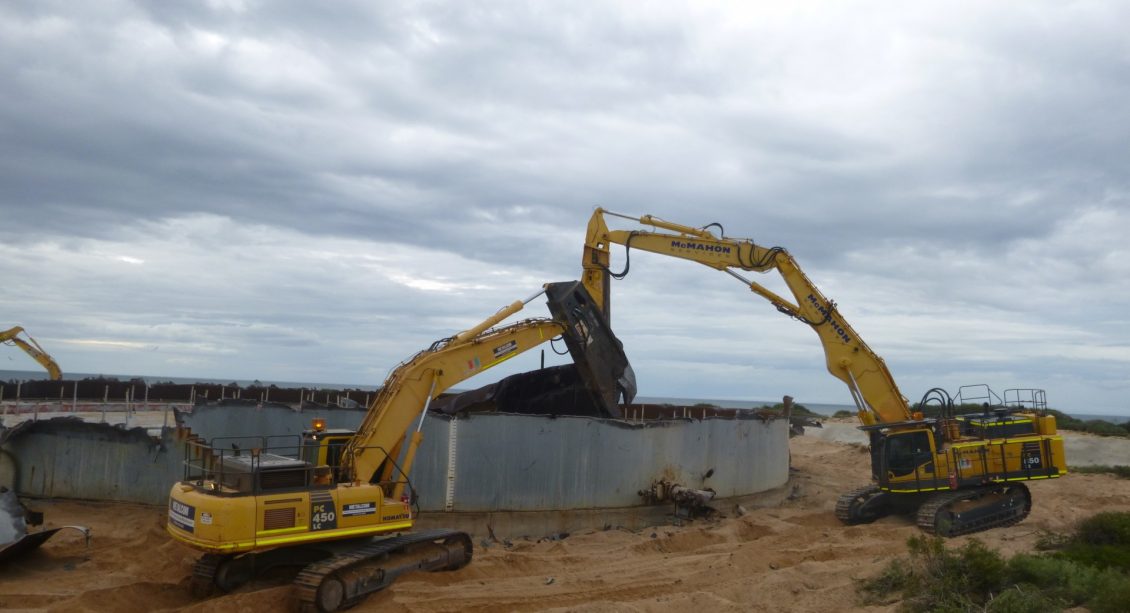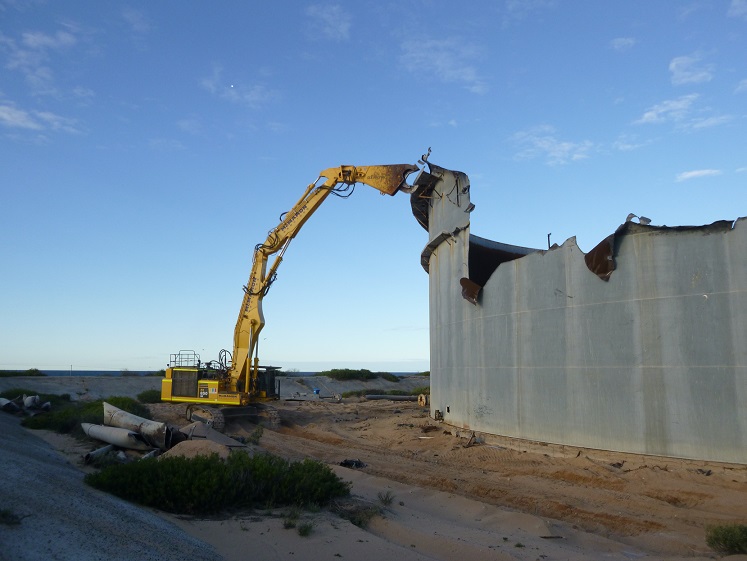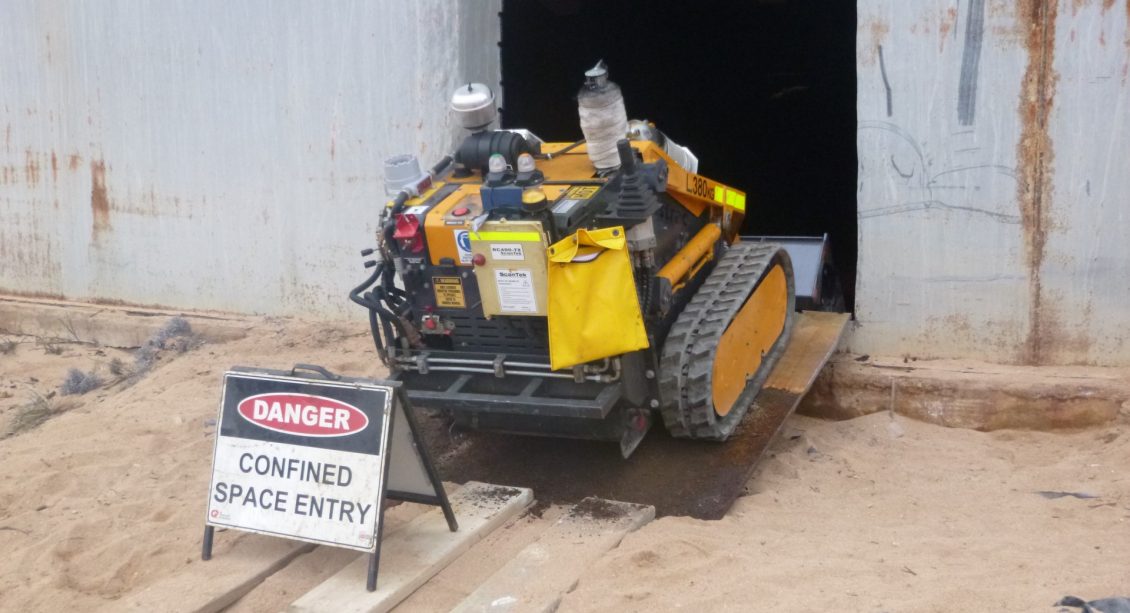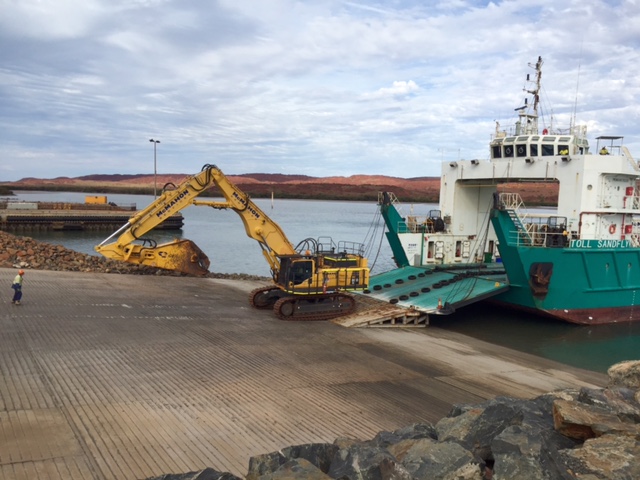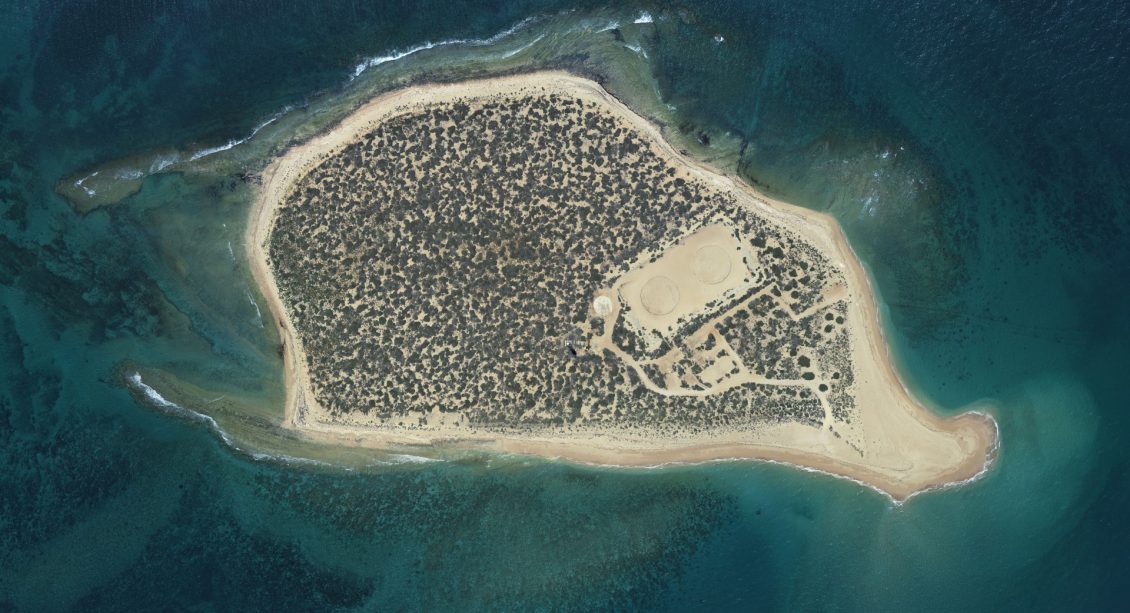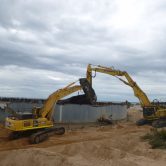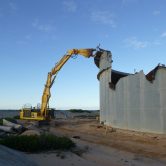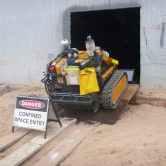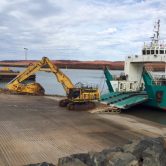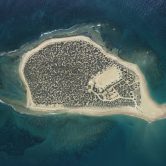Project Overview
Airlie Island is located approximately 35km to the North of Onslow and 50km to the Southwest of Barrow Island, situated in the Indian Ocean off the coast of the Pilbara Region of Western Australia. The tiny island approximately 800m by 400m, and was used as a crude oil storage and processing facility from the 1980s by Australian oil and gas company, Quadrant Energy.
In 2002 the facility was abandoned for economic reasons. In 2007 the Western Australian Department of Environment Regulation classified the facility under the Contaminated Sites Act 2003 as a “Contaminated Site – Remediation Required”. This was due to the presence of active contamination in the vicinity of the two tanks identified during ground water monitoring, the deterioration of the tank roof drains allowed water to mix with the stored hydrocarbons, and the deteriorating tank structural integrity.
Scope of Work
McMahon Services were contracted to undertake the removal of oily water and sludge from the two tanks, demolish the tanks and supporting infrastructure, and the removal of contaminated soil from below the tanks. Each tank was 18m high and 46m diameter.
All equipment and resources required to deliver the works were transported from Karratha to site as there were no facilities on the island including power and water.
Both Tank 1 and Tank 2 featured approximately 200mm of hydrocarbon sludge overlayed with approximately 700mm of oily water. Tank 1 contained approximately 220mm (362m³) oily water and 20mm (33m³) sludge, and Tank 2 contained approximately 310mm (510m³) oily water and 200mm (329m³) sludge, with the tank roofs sitting 1.5m above the tank floor on roof support legs. Due to the toxic air qualities inside each tank and their unknown structural integrity, project personnel could not enter inside for cleaning. Due to the highly flammable nature of the hydrocarbons, only cold shear attachments could be used for manual deconstruction of the tanks.
Once the oily water was removed, two intrinsically safe remote controlled mini tracked bobcats were used to clean the majority of the sludge from the floor of the tanks. The sludge was pumped into 9,000L intermodal containers and loaded onto the landing craft tanks for transport to Karratha for treatment and final disposal.
An 85t excavator with long reach capability and cold shear attachment was then utilised to manually deconstruct the tanks using a top down approach to 1.5m above the floor level. The next step was to manually remove the floating roofs to allow access for the final clean. Once the final clean was complete and the tanks cleaned with high pressure hot water and greasers, the remainder of the tank walls and floor were demolished.
Roof and wall elements were sheared into 1.5m by 1.0m section for ease of transport. All scrap steel and contaminated sand excavated from under the tanks were each separately loaded into 1.2m high covered intermodal containers which were then loaded onto landing craft tanks for transport to Karratha for further processing. Scrap Steel was processed at McMahon Services facilities in Karratha for later export overseas.
Innovations – Remote controlled Bobcats for sludge removal
Because of the toxic fumes and flammable hydrocarbon materials inside the two tanks and the tank’s unknown structural integrity, project personnel could not enter the tanks to undertake the first stages of cleaning. As an added level of complication, the 18m tank walls and elevated floating roof could not be deconstructed until the oil sludge levels and been mostly remediated.
McMahon Services mitigated the risk by modifying two mini bobcats so they could be operated by remote control. A manway was cut into each tank and an intermodal container with a 9,000L was placed next to the manway to collect oil sludge as it was excavated out by the bobcats. Fitted carbon dioxide (CO²) gas canisters fitted to the bobcats automatically expelled the gas over the bobcats whenever there was a risk of a spark.
A Vac Truck was then used to extract the remaining oil sludge resulting in approximately 95% of the sludge being removed. Once completed, the sludge level was at near ground level and enabled the safe mechanical deconstruction of the tank walls and floating roof. There were no unwanted spills and none of the oily sludge was lost to ignition risks.
Environmental Performance – Protection of a Class C Nature Reserve
Under the Land Administration Act 1997 (WA), Airlie Island was classified as a Class C Nature Reserve, land set aside for the conservation of flora and fauna. Therefore, all works on the island had to meet stringent environmental, land and biodiversity conservation requirements.
The flora on the island had to be protected from offshore seed migration, pest and weed control. All plant and equipment needed to meet international quarantine standards including washing of all machinery to remove all soil particles. Cleaning and disinfection of all transportable accommodation units was undertaken while insect bombs eliminated the risk of introducing pest species onto the island. All personnel travelling to the island were subjected to international quarantine inspection regimes including checking for and disposal of any organic materials carried in pockets, bags, shoes and so forth before leaving the mainland.
Delivery Performance
The project peaked at 20 personnel. Plant and equipment included one 85t excavator, one 45t excavator and one 20t excavator, cold shearing demolition attachments, one vac truck, one telehandler, a WA600 wheel loader, 60 specialised metal skip bins, 30 intermodal containers each with 9,000L capacity, two remote controlled mini bobcats, a 24m elevated work platform, and several landing craft tanks of various sizes.

